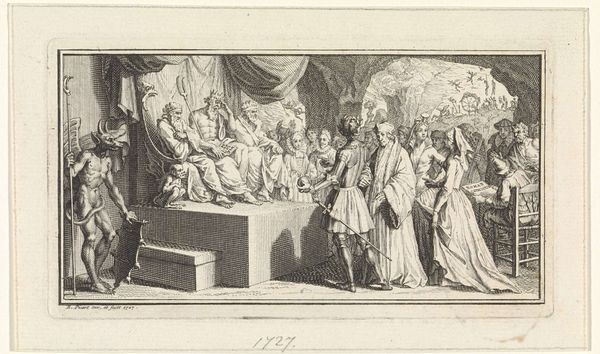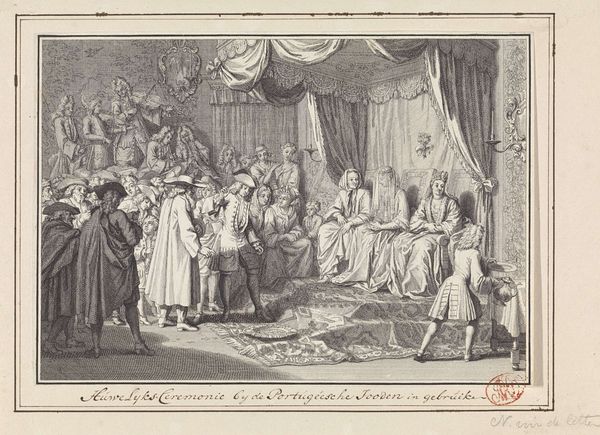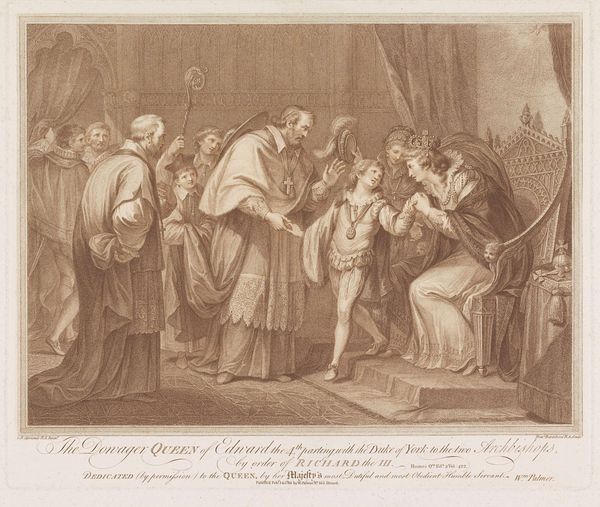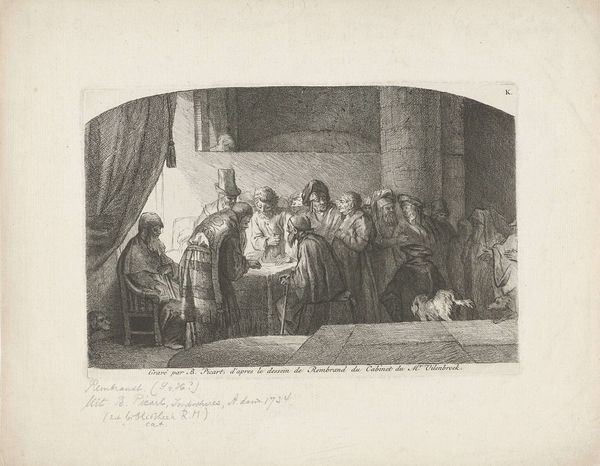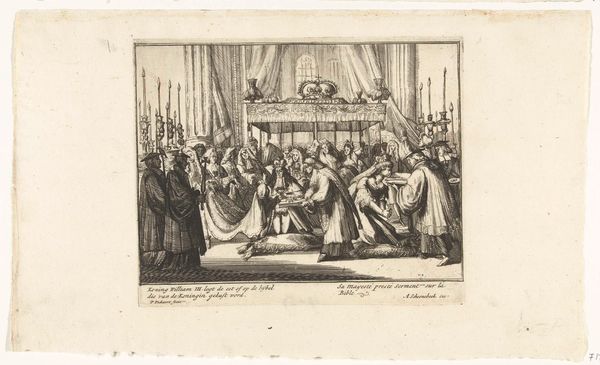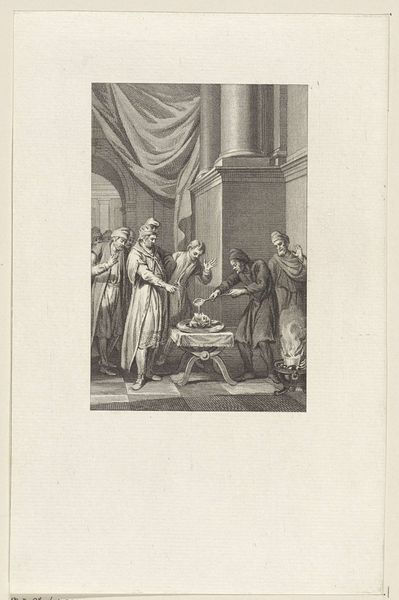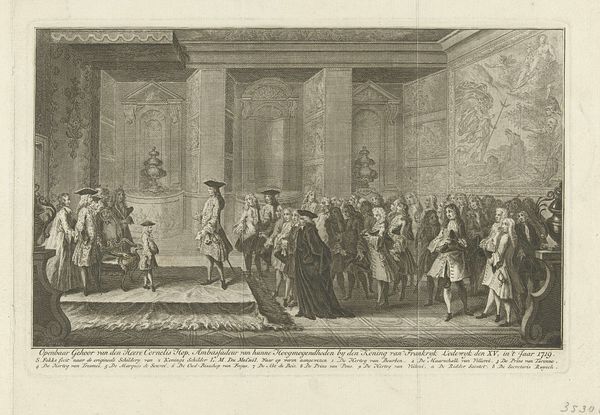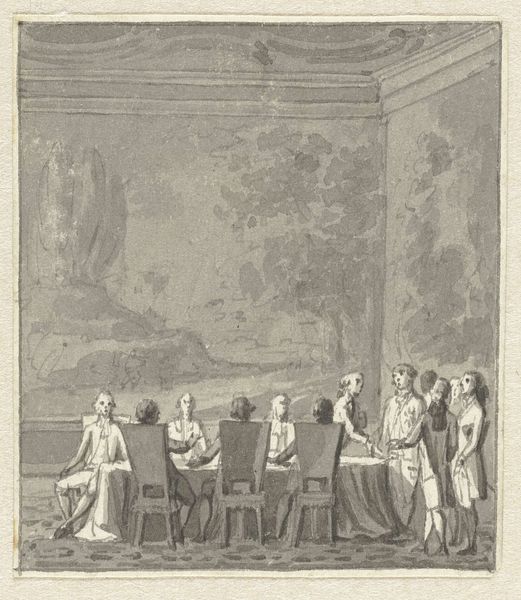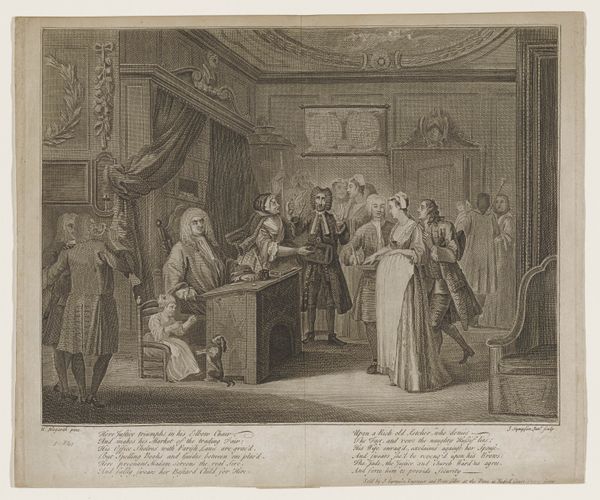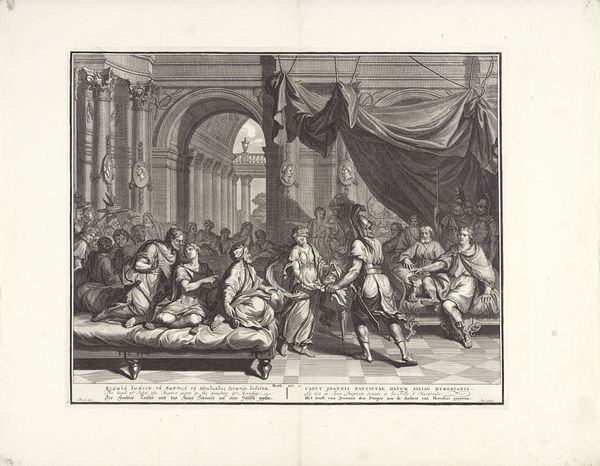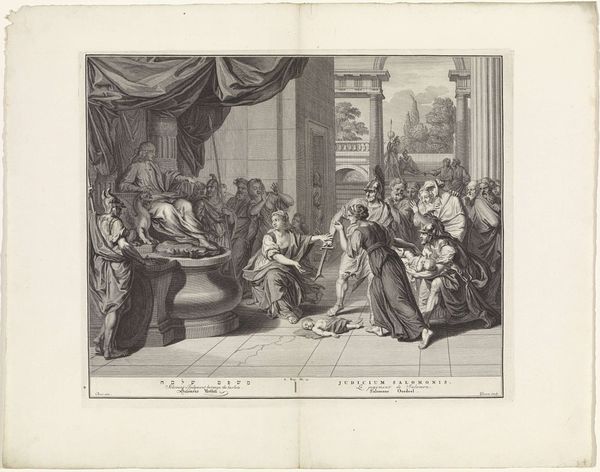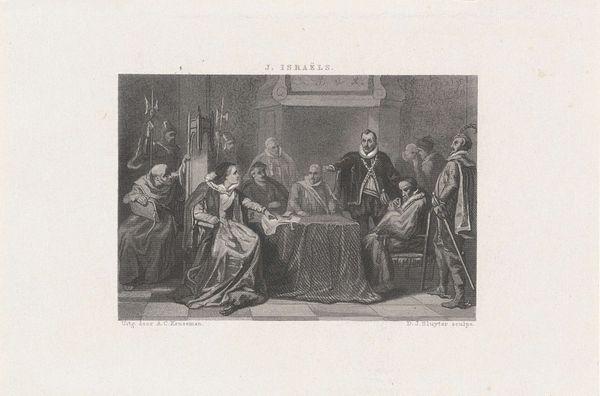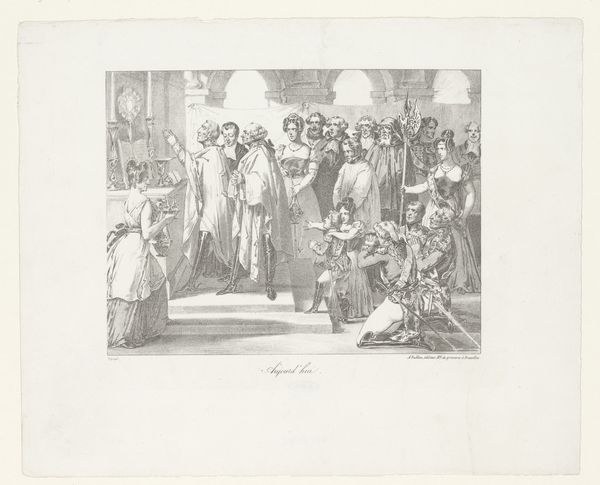
print, graphite, engraving
#
narrative-art
# print
#
pencil drawing
#
graphite
#
genre-painting
#
history-painting
#
academic-art
#
graphite
#
engraving
Dimensions: height 160 mm, width 233 mm
Copyright: Rijks Museum: Open Domain
Curator: This compelling print from somewhere between 1812 and 1859 depicts the Judgment of Solomon. Editor: It strikes me immediately by its intricate linework, achieved presumably through graphite and engraving. The figures seem caught in mid-action, a whirlwind of emotions frozen on this print. The textures appear flat but very precise, it feels distant. Curator: Yes, the distance you sense likely arises from the conventions of Academic art, but I think the figures represent something much more relevant: in this tableau, you're really seeing the collision of justice, motherhood, and power. Consider the patriarchal structures implicit in Solomon’s judgment and its effect on marginalized voices. How might contemporary feminist theory reframe this narrative of supposed wisdom? Editor: From my perspective, I notice the depiction of labor: the executioner about to divide the child. The rendering is sharp and immediate and I notice how close to the mother it appears; like an interchangeable product. I am not so much concerned by the history but by the action and labor. Curator: Interesting that you highlight the role of labor within the image. It's not just the executioner's physical act, but the invisible labor of motherhood being contested and commodified here. And think, this image itself exists because of labor; the artist’s labor, and the workshop required to create and disseminate it. Editor: Exactly! The physicality of the engraving itself is what brings out the themes within. What means produced the scene impacts the content directly. How do we re-contextualize the methods and materiality into today? This "history" is more relevant to processes of contemporary art making. Curator: True. Reflecting on that helps challenge our assumptions. Understanding the Judgment of Solomon through a contemporary lens lets us consider what truths we prioritize and whose voices we silence in the pursuit of supposed justice. It urges critical examination of power imbalances that extend beyond history into present day. Editor: In the end, for me, it is all about revealing and unraveling. What materials are being used? What steps does it take? With "Oordeel van Salomo" we both reveal more, through social contexts, materiality, and in intersectional meaning. Curator: A welcome conclusion for such an artwork!
Comments
No comments
Be the first to comment and join the conversation on the ultimate creative platform.
